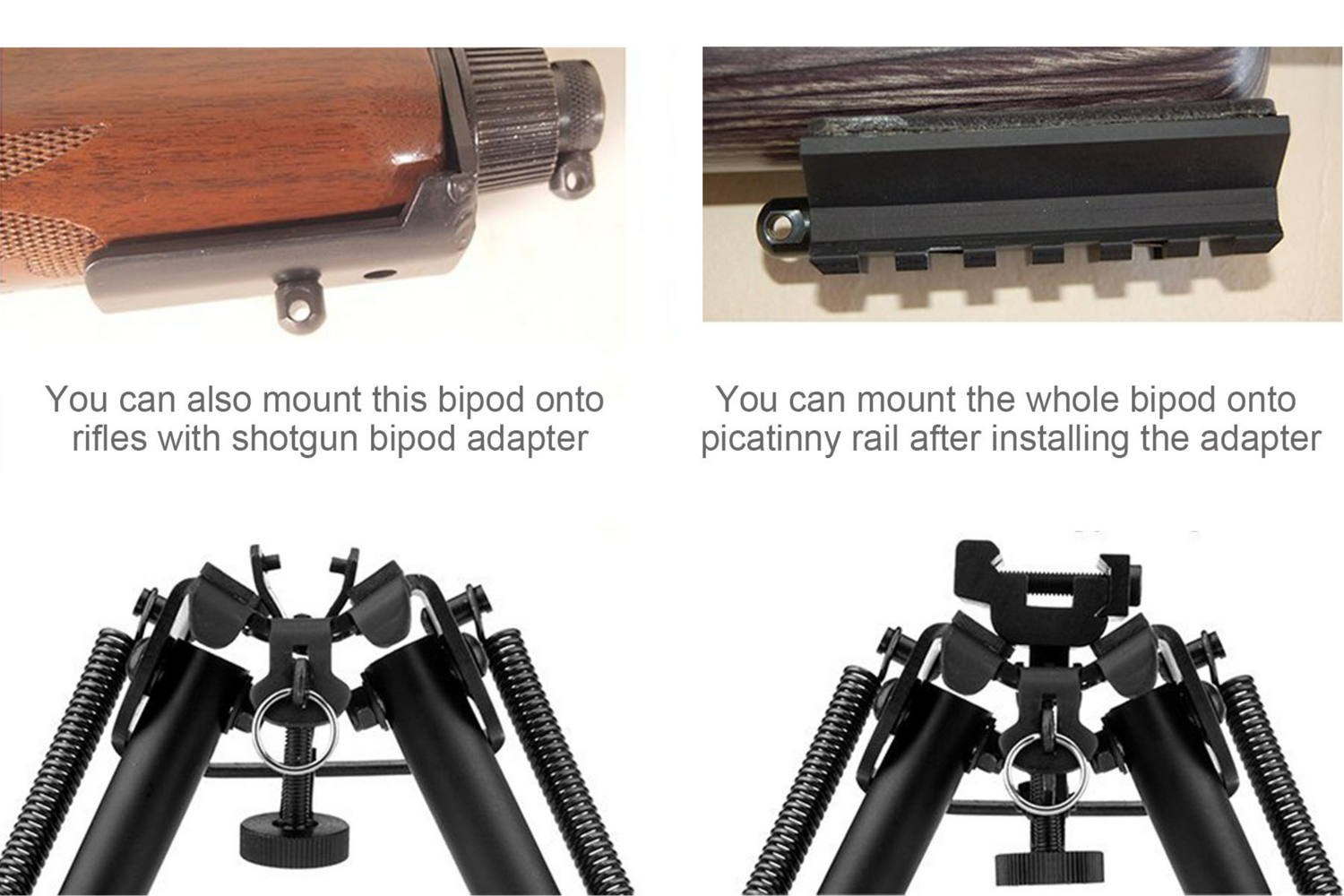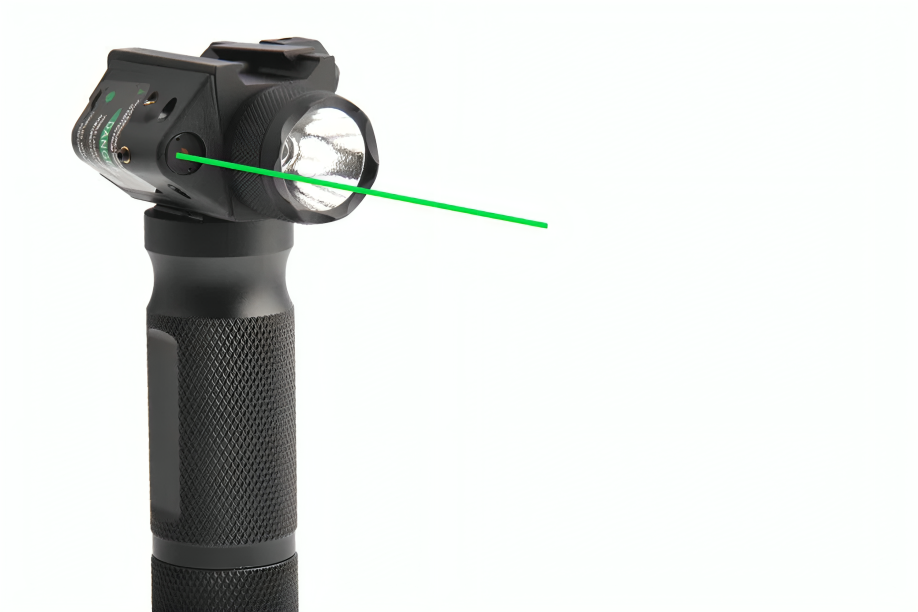A lot of people know how important it is to get a good bipod for their AR-15 setup, especially for varmint hunting, competition shooting, or any other application where steady aim is crucial. It is in choosing the right rifle bipod for an AR-15 that many people encounter some difficulties.
- Firstly, just finding a good bipod that offers the right balance between stability and portability can be tricky.
- Moreover, in the case of an AR-15, you need to get one that is compatible with the AR-15’s rail system, whether it is a Picatinny or M-LOK mount.
- Then there is other stuff: like ensuring the length is a perfect match, and that the bipod comes with features that suit your shooting style and terrain, and so on.
Let's say you have found a couple of decent-looking bipods online, and you need to choose one that is the best fit for your AR-15: how do you go about this?
Well, it's all in the features: Here is a list of all the factors to pay attention to in order of importance. Follow this list, check the points off one after the other, and you will end up with the best bipod for your AR-15.

1. Check for Compatibility with Your Mounting System
Picatinny rail mounts are the most common and widely compatible option for AR-15 rifles: that much is obvious. They attach to a Picatinny or MIL-STD-1913 rail, and the mounting point is stable and secure….but that is not all.
Your AR-15 May Have M-LOK or KeyMod Handguards
If your AR-15 has an M-LOK or KeyMod handguard, you will need a bipod designed specifically for these attachment systems. Of these two, M-LOK is the more popular, and there are plenty of bipods that fit.
Some AR-15 Models Still Use Sling Swivel Studs
These are not as common anymore, but some AR-15 models (especially the older models like the M16, or those commercial AR-15s from the 60s or 90s) still use a sling swivel stud. Admittedly, few people still use these, but if your AR-15 is an older model, you might want to just check.
Moreover, sling swivel studs are not gone, at least not completely. Certain hunting configurations still use a sling swivel stud. So, always check.
Tip#1: If you are still in doubt, go for a Picatinny rail bipod. These are most likely to work: they fit most AR-15s.
2. Make Sure It is Adjustable
Do not assume that all bipods are adjustable. Yes, the modern models are indeed adjustable, but there are still many simpler models and “budget-friendly” models that are either not adjustable at all or have fixed legs and limited adjustability.
Ideally, you want a bipod that offers adjustable leg lengths, swivel, and tilt features for versatility in different terrain. Here’s what to look for:
Height Adjustment
Go for a bipod with adjustable legs: typically, the adjustments range from 6-9 inches, 9-13 inches, and even 13-23 inches, so you can shoot from a prone, sitting, or standing position.
Cant and Tilt
You also want a bipod with a swivel function (cant/tilt), which will allow you to make small adjustments for uneven terrain.
Here’s another tip for you: Those bipods that have spring-loaded legs are great. They automatically extend when you push the button, and you don't have to spend time fiddling with this or that to get the adjustment right.
3. Material & Durability
Choose aluminum bipods if you want a lightweight and durable bipod that comes at a decent price.
Bipods made of aluminum are also rust-resistant and are better when it comes to handling the wear and tear of regular shooting.
Carbon Bipods for More Serious and Specialized Applications
Carbon fiber bipods are great (and I certainly won't object if you say they are better than aluminum). However, they are more expensive, and for many shooting applications, an aluminum bipod would do the job.
However, you can still go for carbon steel for hunting or long-range precision shooting. Carbon fiber bipods are stronger and lighter than aluminum, but they can come at a higher price point.
Choose Steel if you want a More Durable Option
Some bipods use steel for added durability, especially on parts like the legs or the mount. Steel is really strong and durable, but take note that it will make your bipod really heavy-heavier than even aluminum or carbon fiber.
Tip #3: For general use, aluminum is a great balance of weight and strength. For extended hikes or lightweight builds, carbon fiber is the way to go.
4. Check for Variety and Adjustability in Leg Length and Positioning
Leg positioning and adjustability are both very important when it comes to choosing a bipod for an AR-15. If buying a bipod for our AR-15 involves choosing between fixed and adjustable legs, leg flexibility, and rubber vs spiked feet, here are some guidelines to keep in mind:
- Fixed-leg bipods are simple and sturdy, but they lack versatility. Adjustable legs give you the option to change the height depending on your shooting position.
- Some bipods have legs that can rotate to different angles. If you’re in a variety of shooting positions or on uneven terrain, having legs that can adjust from 45°, 90°, and 180° can be a game-changer.
- Bipod legs often come with either rubber feet (for stability on hard surfaces) or spiked feet (better for soft terrain like mud or grass). Some bipods offer interchangeable feet, allowing you to switch between the two types.
Tip #4: For shooting off hard surfaces, like a range bench, go with rubber feet. For hunting or outdoor applications, spiked feet are better for soft or uneven ground.
5. Consider Weight and Portability
If you are going to be carrying your bipod around, go for a lightweight model. You don't want to be hauling a heavy 13-inch bipod when hunting or doing anything tactical shooting.
Go for a 6-9-inch that is easy to carry for extended periods.
On the other hand, heavier bipods (9-13 inches or taller) provide more stability. These would be ideal if you are into precision shooting or benchrest. But for a hunter or tactical shooter, there is no benefit to carrying all that weight around.
Tip#5: If you're planning on hiking or traveling with your AR-15, opt for a lightweight bipod to minimize added weight. For more stability during long-range shots, a heavier bipod can be beneficial.
6. Material Quality and Build
Look for a bipod with solid construction that won’t wobble or shift under recoil. Make sure the legs lock in place securely and are unlikely to flex or shift when shooting.
Usually, a strong and reinforced frame is a good sign that a bipod can withstand recoil and hard use.
A folding mechanism is a huge plus. Some bipods fold up for easy storage and to make them more compact when not in use. This is ideal for hunting or carrying your rifle in a bag or case.
9. Price Range
Price is usually a good indication of quality when it comes to bipods. Usually, you have the budget bipop, a mid-range model, or a higher-end model. Here’s what you should know before splashing the cash:
Budget Bipods($30-$100)
Budget Bipods can provide decent stability for most users, and they are super affordable, but they may come with the following drawbacks:
- Generally made from aluminum or composite materials.
- May not have all the premium features (like height adjustments or canting ability).
Recommended Budget Bipod
Consider this rifle bipod with Quick Release Spring Clamp from Pinty. At less than $20, it offers the following features:
- Made of anodized T6063 aluminum alloy with an anticorrosive matte black coating
- It can fit a wide range of barrel sizes from 0.43 to 0.75'' (11-19 mm)
- Height is adjustable: the two legs can extend between 8 and 10.5 inches (20 and 27 cm)
- It’s also completely foldable, allowing you to use it with complete convenience.
Mid-Range Bipods ($100-$200):
These bipods typically offer better build quality, more adjustability, and are made of stronger materials like aircraft-grade aluminum. They may not offer premium and top-end features, but they are capable, and depending on the brand, you can get a great one.
Recommended Mid-Range Bipod
Consider this Picatinny Rail System Adjustable Bipod from Pinty.
- It is made from aircraft-grade aluminum and anodized for superior weather resistance
- Legs are adjustable up to 6-9 in. (152-225 mm)
- Secures firmly onto any standard Picatinny rail system.
- Allows use of a rifle sling for carrying convenience.
High-End Bipods ($200+)
Premium bipods come with higher-quality materials, exceptional adjustability, and specialized features (e.g., canting, multiple leg positions).
So, What's the Bottomline?
A good rifle bipod should match your shooting needs while enhancing stability and comfort during shooting. Ultimately, the right bipod depends on balancing adjustability, build quality, and weight for the specific purpose you intend to use it for.
Consider your primary shooting style (range shooting, hunting, tactical, etc.), terrain, and rifle setup before making a decision.










